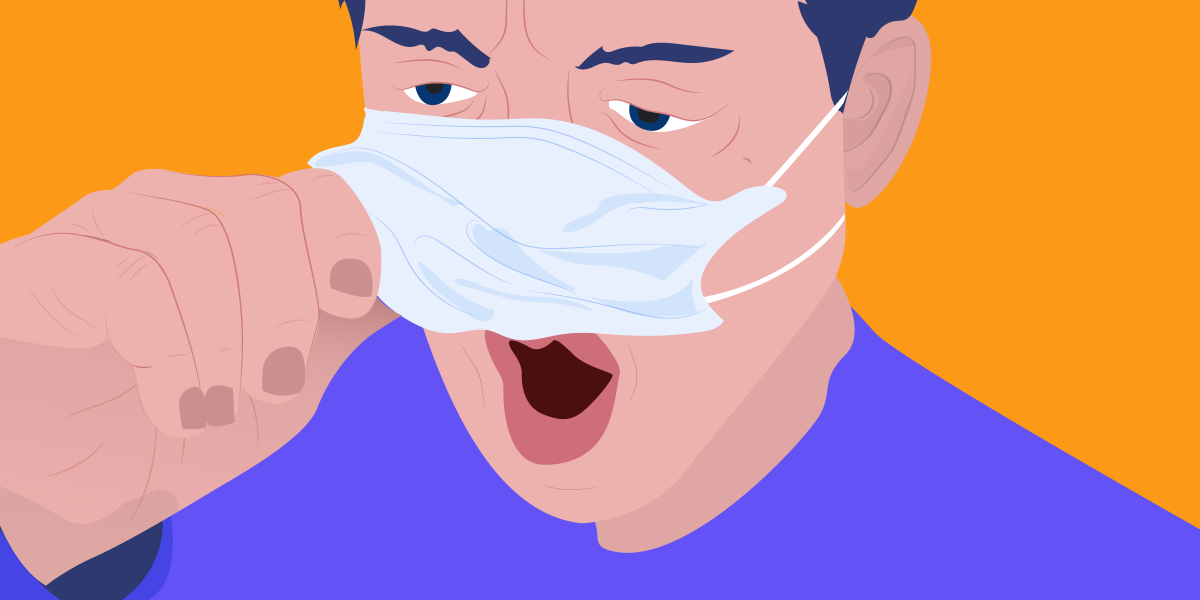The Thunder Bay District Health Unit recently adopted a policy that requires all persons to wear a mask or face covering when they enter or remain in an enclosed public space. The Marathon Family Health Team (MFHT) understands that this has raised some concern for our patients who have underlying lung disease (e.g. COPD and asthma) as they fear that this will negatively impact their ability to breathe.
We acknowledge that wearing a mask can be uncomfortable and that it can cause feelings of anxiety for some. But we also recognize that wearing masks can help reduce the spread of COVID-19 and that it can help keep our communities safe. With that said, MFHT supports the Canadian Thoracic Society’s recommendations regarding the use of face masks by individuals with underlying lung disease for periods of time when it is not possible to consistently maintain a 2-metre physical distance from others.
The Canadian Thoracic Society recommends the following:
- Wearing a face mask may create feelings of anxiety. This may cause symptoms such as shortness of breath. If patients cannot tolerate wearing this added protection, it is recommended that they avoid or minimize circumstances in which physical distancing is not possible.
- There is NO evidence that wearing a face mask will exacerbate an underlying lung condition.
- Anyone wearing a face mask should familiarize themselves with how to properly put one on and take one off.
- Ensure that the face masks feels comfortable so that it doesn’t require frequent adjustment to avoid contaminating the wearers’ hands.
- Wearing a face mask alone will not prevent the spread of COVID-19. Face masks should complement other recommended public health measures, including frequent hand washing or use of alcohol-based hand sanitizers, and physical distancing.
If a situation occurs where individuals with an underlying lung condition feel short of breath, it is recommended that they remove the mask and use the strategies that they would typically use to provide relief (e.g. breathing techniques). It’s also recommended to speak with a healthcare provider to develop strategies in order to be able to use this added form of protection, which is important for this population since they are at higher risk of having a more serious case of COVID-19 if they do get it.
Although face coverings are recommended for most individuals, some exemptions can apply (e.g. for people with lung conditions who cannot wear a mask despite best efforts). For a list of exemptions, please visit the Thunder Bay District Health Unit’s website (link provided below). Please note that letters of exemption are not required and that exemptions do not apply in personal service settings.
To protect the health and safety of our patients, healthcare providers and staff, there will also be no exemptions from wearing a mask when accessing the MFHT for routine in-person appointments. We are committed to providing our patients with timely and quality care; therefore, if patients cannot wear a mask, they will be offered a virtual appointment or a home visit (when appropriate).
Mask anxiety is common, especially for people who already experience difficulty breathing. The good news is that overcoming mask anxiety is possible by utilizing strategies that provide gradual exposure to situations that cause fear or anxiety. Below is some advice for those who are looking to breathe easier and to overcome anxiety when wearing a mask.
Focus on your breathing. Practicing mindful, diaphragmatic (belly) breathing before you even put on a mask can help you slow down your breathing and strengthen the muscles in your chest and abdomen to make your breathing more efficient. Consider the 4-7-8 breathing technique. To do this, you inhale for 4 seconds, hold your breath for 7 seconds, and then exhale for 8 seconds. Learning to focus on your breathing will help you avoid rapid, shallow breathing while you are wearing a mask.
Practicing to wear your mask can make it more tolerable. Taking the time to become familiar with wearing a mask can help your body’s response to anxiety. Consider putting on your mask when you are at home to practice breathing while wearing it. Practicing to wear your mask should be gradual and at your own pace. For example, if trying to wear your mask for 1 minute seems too long, try it for 10 seconds and work your way up to gradually increase your comfort over time. As you practice wearing your mask, pay special attention to the fact that you can breathe. If you feel your anxiety rising, try some positive self-talk and remind your body that it’s safe, that it’s just a mask and that it’s responding normally – it just needs to get used to it. You can also take the mask off to show your body that if wearing a mask does become too much, you can take the mask off and breathe fully.
Control timing and location. Take a break from wearing a mask by finding times in your day where you can safely be mask-free. For example, shifting from in-person meetings or visits to virtual ones so that you can still attend meetings or socialize without having to worry about wearing a mask. It also helps to have a plan before you leave your home and have to put on your mask. Having a plan can allow you to reduce the amount of time you spend wearing a mask. For instance, make a list before going to the grocery store so that you can make it a quick trip and remove your mask sooner.
Find the right mask for you. Not all masks are made the same. For example, some can feel thick and heavy, some can feel tight on your face and some can make you too hot because of the type of cloth that is used. Think about which part of the mask gives you anxiety and see if you can find a mask that works better for you, such as a lighter mask that feels easier to breathe though.
Changing your mindset. When you focus on the thought of doing something for the greater good, it can motivate you to try to push aside the anxiety. You may be willing to trade some comfort for the protection of yourself and others.
We understand that wearing masks can be a difficult transition for some and we want to remind our patients that we are here to support them in any way we can.
To learn more about our district’s mandatory face covering policy, visit the Thunder Bay Health Unit’s website: https://www.tbdhu.com/masks.
For more information on COVID-19 and lung health, please visit the Lung Association’s website: https://www.lung.ca/.



